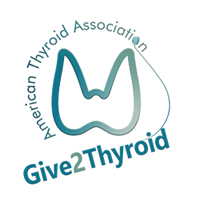The proportion of people with normal TSH and low or high FT4 levels, who would have been missed with a one-step approach were calculated. Various characteristics of participants, including gender, age, smoking status, height, weight, body mass index (BMI), blood pressure, alcohol use, use of thyroid-affecting medications, and menopausal status, were used to determine whether these can be used to calculate a score to predict risk of thyroid hormone abnormalities.
The average age of participants was 51 years (range, 16.5-97) and 55% were women. This population was considered iodine-sufficient and mostly white. Of 4,471 adults, 35 (0.8%) had overt hypothyroidism, 86 (1.9%) subclinical hypothyroidism, 23 (0.5%) overt hyperthyroidism, and 170 (0.5%) subclinical hyperthyroidism. A total of 82 (1.8%) had normal TSH and low FT4 levels, and 87 (1.9%) had normal TSH and high FT4 levels. The FT4 levels were very close to the normal range in a majority (144 participants, 85%) of 169 participants with normal TSH but low or high FT4 levels.
Significant risk factors for hypothyroidism included being female, age 50 to 75 years, age > 75 years, and BMI ≥ 30kg/m2. The only significant risk factor for hyperthyroidism was smoking status. However, both sets of risk factors did not have good level of prediction of thyroid hormone abnormalities.
WHAT ARE THE IMPLICATIONS OF THIS STUDY?
Only 7% of adults needed both TSH and FT4 to be checked to determine whether their thyroid hormone levels were abnormal. Even in those with low or high FT4 but normal TSH, FT4 levels were very close to normal range, and unlikely to have caused any clinical symptoms that warranted treatment.
Since the majority of patients did not need FT4 levels to make the diagnosis of thyroid hormone abnormalities, it would be most cost-effective to have a two-step approach in assessing thyroid dysfunction, where TSH is measured and FT4 is measured only if TSH is abnormal. There are rare cases of hypothyroidism from pituitary problem, where both TSH and FT4 levels are low, but these patients typically have other clinical signs that would suggest such diagnosis.
— Sun Y. Lee, MD




